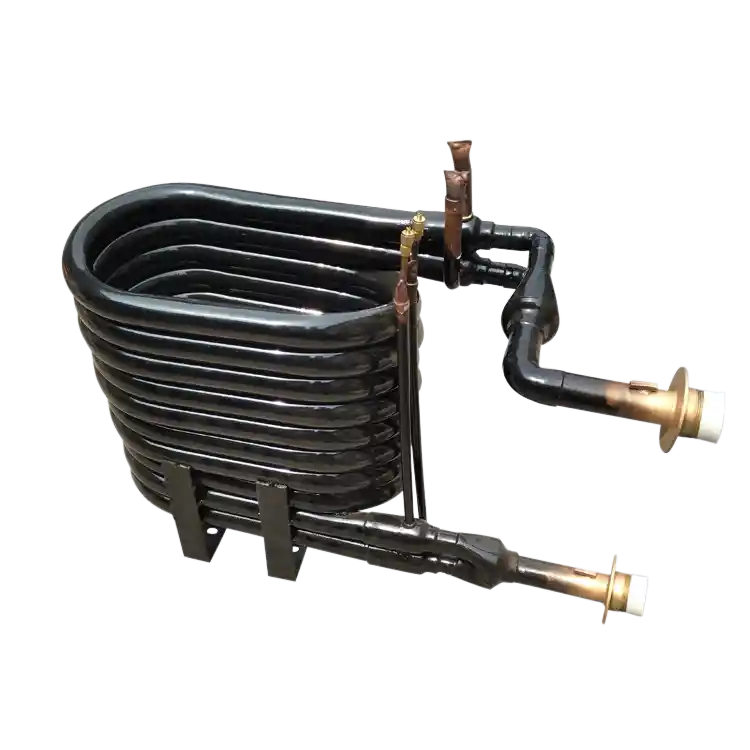1. Introduction
The measurement of inner and outer tube dimensions is a critical aspect of quality control in the production process of coaxial heat exchangers. These measurements ensure the accuracy and consistency of tube dimensions, which directly impact the heat exchanger’s performance, efficiency, and overall quality. This article explores the significance of inner and outer tube measurements, measurement techniques, quality control procedures, and the importance of maintaining dimensional integrity in coaxial heat exchangers.
2. Importance of Inner and Outer Tube Measurements
Accurate measurements of inner and outer tube dimensions are essential for several reasons:
2.1 Fluid Flow and Heat Transfer Efficiency
The inner and outer tubes play a vital role in facilitating fluid flow and heat transfer within the heat exchanger. Accurate measurements of tube diameters and wall thickness ensure proper fluid passage and efficient heat exchange, maximizing the heat exchanger’s performance and energy efficiency.
2.2 Compatibility and Assembly
Precise inner and outer tube dimensions ensure compatibility and ease of assembly. Tubes with consistent dimensions allow for seamless connection with other heat exchanger components, such as headers, fins, and connectors, ensuring proper fit and minimizing the risk of leaks or pressure imbalances.
2.3 Structural Integrity and Durability
The dimensional integrity of the inner and outer tubes directly affects the structural integrity and durability of the heat exchanger. Accurate measurements help ensure that the tubes can withstand operating conditions, internal pressures, and thermal stresses without compromising safety or performance.
3. Measurement Techniques
Several measurement techniques can be employed to measure the inner and outer tube dimensions in coaxial heat exchangers. The selection of a suitable technique depends on the specific requirements and desired level of accuracy. Common measurement techniques include:
3.1 Vernier Caliper
Vernier calipers are widely used to measure the outer diameter and wall thickness of coaxial heat exchanger tubes. They provide a quick and convenient method for obtaining accurate measurements.
3.2 Micrometer
Micrometers are precision instruments suitable for measuring the outer diameter and wall thickness of tubes with higher accuracy. They offer finer measurement increments and are ideal for applications that require tight tolerances.
3.3 Ultrasonic Thickness Gauge
Ultrasonic thickness gauges utilize ultrasonic waves to measure the wall thickness of coaxial heat exchanger tubes. They provide non-destructive and highly accurate measurements, allowing for assessment of wall thickness variations along the length of the tube.
3.4 Optical Measurement Systems
Optical measurement systems, such as laser scanners or vision-based systems, can be employed to measure the outer diameter and wall thickness of tubes. These non-contact measurement techniques offer high precision and are well-suited for complex tube geometries.
4. Quality Control Procedures
To ensure the dimensional accuracy of inner and outer tubes in coaxial heat exchangers, specific quality control procedures should be implemented. These procedures include:
4.1 Incoming Material Inspection
Incoming material inspection involves measuring the dimensions of the inner and outer tubes upon receipt from suppliers. This step ensures that the tubes meet the specified requirements before being used in the production process.
4.2 In-Process Inspections
In-process inspections should be conducted at various stages of the manufacturing process. These inspections involve measuring the inner and outer tube dimensions to detect any deviations from the specified tolerances. Any non-conformances should be addressed promptly to maintain dimensional integrity.
4.3 Final Inspection
A comprehensive final inspection is carried out on the completed coaxial heat exchangers. This inspection includes measuring the inner and outer tube dimensions to verify compliance with the required specifications. Only heat exchangers that meet the dimensional requirements should be approved for shipment.
5. Maintenance of Dimensional Integrity
Maintaining the dimensional integrity of inner and outer tubes is essential for the long-term performance and reliability of coaxial heat exchangers. This can be achieved through:
5.1 Calibration and Maintenance of Measurement Equipment
Regular calibration and maintenance of measurement equipment ensure accurate and reliable measurements. This helps to prevent measurement errors that could lead to deviations in tube dimensions.
5.2 Process Control and Documentation
Implementing robust process controls and documentation procedures is crucial to monitor and track the dimensional aspects of the production process. This allows for timely identification and correction of any deviations, ensuring consistent tube dimensions.
5.3 Training and Skill Development
Providing adequate training to operators and technicians involved in tube measurement is essential. Proper training enhances their skills in using measurement tools and techniques, reducing the likelihood of measurement errors and improving overall dimensional accuracy.
6. Conclusion
Inner and outer tube measurements play a vital role in quality control during the production process of coaxial heat exchangers. Accurate measurements of tube dimensions ensure optimal fluid flow, compatibility, and structural integrity, ultimately contributing to the heat exchanger’s performance and durability. By employing suitable measurement techniques, implementing quality control procedures, and maintaining dimensional integrity, manufacturers can produce high-quality coaxial heat exchangers that meet customer requirements and provide efficient heat transfer solutions in various applications.


